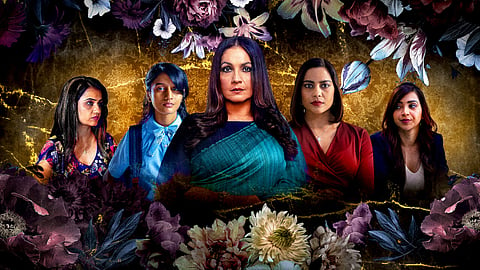

In looking through my things
What did they find?
A few dreams, the moon,
A pack cigarettes-full,
a matchbox full of hope,
an incomplete letter
which they could not decode.
— Anamika
(Originally in Hindi, translated by author)
The film Udaan by Vikramaditya Motwane that was premiered in 2010 Cannes Film Festival, in the Giffoni Film Festival (a children's film festival held in Southern Italy), and in Indian Film Festival in Los Angeles in 2011, won numerous awards for its sensitive portrayal of the coming of age of young boys, among other things. The film starts with four boys escaping to Shimla town to watch a B grade adult film and getting caught. One of the characters, Rohan, is shown as an introspective person who expresses his tumultuous experiences through poems.
"What he hates most about Worcester, what makes him want to escape, is the rage and resentment that he sense crackling through the Afrikaans boys. He fears and loathes the hulking, barefoot afrikaans boys in their tight trousers, particularly the older boys, who given half their chance, will take you off to some quiet place in the veld and violate you in ways he has heard leeringly alluded to — borsel you, for instance, which as far as he can work out means pulling down your pants and brushing shoe polish into your balls (but why your balls? why shoe-polish?) and sending you home through the streets half-naked and blubbering."
What strikes us here is the honesty of the portrayal of a boy in school, living an ordinary life, feeling on the edge with excitement and experiences at his age.
The series Bombay Begums brings this, a very important journey, to light — albeit with the focus on women and their girlhood. The internal landscape of a teenage girl is portrayed with complexity and a sincerity to her experiences. By soliciting a ban for Bombay Begums, the NCPCR has shown its discomfort with women's come of age, and has compelled us to ask questions of how girls are portrayed in the Indian cinematic medium. Shai's role begins in a non-conventional way as she is seen talking to herself and us through her drawings and their interpretation. Girls have initiation rituals too when they have to make friends in school and become part of a group. That can lead to pressures and numerous big and small humiliations. Her role bounces back from a drug overdose due to a heartbreak at a party drawing and talking to herself about feeling a strength in being a woman. The ambiguous place of this affirmation is felt as sensitively as it is played. The words don't seem to come from a place of duality of becoming conscious of gender discrimination or remaining unaware of the forces that work against women. It is a place of experiencing one's creative potential and attempting to trust an individual path no matter how uncharted.
The series shows women in the corporate as human beings who understand desire but are only slowly realizing freedom and autonomy. The complexity with which this subjectivity interacts with the unequal playing field of the corporate is also well portrayed. For it appears that no matter who wins, men or women, both lose due to the gender hierarchy that exists in the larger social context. It is Shai's character that carries this ambiguity through her creativity as a spine of the series. One might ask if this isn't the way we come to understand our identities – from a place of uncertainty? Freedom and identity are both marked by uncertainty but perhaps also despair, for one begins alone to recognize or misrecognize ones place in the social structure leading to acts that agitate against the structure creatively.
There are very few films that focus on the life of adolescents, teenagers, and youth in the country, other than those that stereotype, that may be commercial successes but portray almost programmatic young characters that are only shown falling in and out of infatuation. Infact, these roles are mostly assayed by old male heroes with young actresses. There are some good documentaries on young men and teenage boys going through the tumultuous stages of boyhood and adulthood, but there is very little that one finds in films on girlhood.
The daily soaps on channels that show child brides and marriages, season after season, and domestic strife as the turf of women, have far reaching detrimental effects on the psyche of young adolescents, teenage girls and young adult women. A breath of fresh air, the internal life of a teenage girl is shown to be the most powerful character in the series. Despite the uncertain stage which she is going through, her resolutions are a pathway to selfhood for young women. One can critique the character for being oriented towards upper class and caste, and elite, nonetheless, it is the fragments of truth through which the character creates resonances with its audience.
Finally, isn't it productive to tackle despair, doubts and sadness through creativity and self talk? Isn't that what self-help books, motivational courses and new age Gurus try to tell us anyways? Aren't the drawings of Shai and her talk to herself how Art therapy works? Can't Rohan's poems from Udaan, Coetzee's childhood self, and Shai's drawings and words, be shown to co-exist?
Eveleen K Sidana is a PhD candidate in Sociocultural Anthropology at University of California, Davis.
Disclaimer: The views expressed in this article are the writer's own, and do not necessarily represent the views of the Indian Writers' Forum.
Courtesy: Indian Cultural Forum
This article was first published by Newsclick.